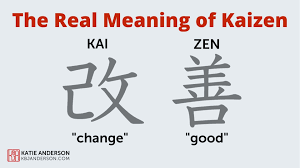A quintessential question that a leader must answer himself just as he assumes the responsibility to lead someone is – why should my sub-ordinate want to report to a stranger with the requisite obedience and loyalty? The basic human ego or even self-respect doesn’t allow an individual to want to obey anyone except if he finds the person worth it or there is some hidden benefit he wants to extract from the leader.
Having said that, it is also true that most humans need leaders to guide them, whether it is political, religious or social scenario or the at the workplace. Leadership is not only a human aspect; even animals have an alpha male as a leader of the pack but human leadership is a conscious intellectual phenomena. Organisational studies on leadership define leadership under commonly known and read areas:
- Autocratic
- Democratic
- Collaborative
- Participative
- Servant/ spiritual
- Transformational
Academically speaking, it is important to define such categories based on the subjective intellectual needs of an individual. In reality though, professional leadership at the workplace exhibits a mix of all leadership styles to meet the situational needs. A leader may believe in democratic style of handling the team but there can be times when he will need to be autocratic to enforce discipline and hence put his foot down and get the implementation done. In other times the same leader can get everyone together, be like a part of the team and collaborate to suit the need of the moment. A leader needs to train, reward and also enjoy with the team which is essential for the transformation of the team for taking bigger assignments in future.
Spiritual leadership, for example encompasses all of these types and also covers more ground. It is important to understand that leadership cannot be confined in one area and is purely situational in nature. Even in the same team with the same manager, different styles are supposed to be used with different team members as per their personality and habits as well as the need of the hour. A perfect leadership style should be called a conditional leadership style which should be a one stop shop solution of all needs of managing the team depending on the condition of that moment.
Conditional leadership is the way a sound leader works with the team and creates a super performing and disciplined team.
How a conditional leader works
There are certain things that a leader must do to tackle this situation:
- Acknowledge – Most leaders interact with their employees in a way that they are just a means to the end, the end product being performance. A leader must rather acknowledge that a worthy candidate is working with him and he has trust on his abilities.
- Appreciate – Humans are seekers of social approval and look out for people who can tell them that they did a good job. When a leader does that for a good effort irrespective of the result, the team member wants to continue doing his best going forward too.
- Motivate – The team member is there to work and also justify his remuneration from the organisational perspective. Therefore it is essential that he is motivated by the leader to achieve the task which was given to him.
- Inspire – Inspiration is different from motivation in the way that there must be a motive to motivate and therefore motivation is external in nature. Inspiration is when you encourage a person to do his best to fulfill his being, to actualize his self to the fullest and to strive for excellence and know well that when the effort is sincere, results will follow. An inspired employee will always strive to take risks and initiatives. So a leader must put the team member on auto pilot mode by igniting a flame of passion towards excellence within him.
- Accountability – Accountability towards failures and acknowledgment of team members towards success is a hallmark of great leadership skills. A rare virtue found amongst leaders, most are seen to go the other way round demotivating the team and pushing people towards the exit door eventually.
- Emotional Intelligence – To be able to be on the correct side of accountability, emotional stability and balance is a necessary ingredient. Successful leaders around the world in all aspects of life are known to be people with high degree of emotional intelligence. Things don’t go your way all the time and when the tide is against us, we not only have to enter the blame game but master ways to ride the tide. Even during times of success, the emotional stability of the leader is instrumental in keeping the upwards curve going lest a mistake in a moment of pride spoils the party.
- Feedback – If something goes wrong, a constructive feedback but with no ambiguity must be given to the sub-ordinate. If need be the feedback can be a reprimand too which can be balanced with a pat on the back in the end.
- Role Model – The team always looks at the leader for direction, especially when the going gets rough. In this time, a good leader always knows that his panic will make the whole team demotivated. As they say – a good neta needs to be a god abhineta. Not only the character of a leader needs to be strong enough to remain stable and managed emotionally but even if that ability takes a hit for a while, he must not allow the weak state of mind show up in his body language. He must show his resilient face in difficult times.
- Leverage the Synergy – Stephen Covey, in his famous book, The Seven Habits of Highly Effective People, mentions the sixth habit as ‘leverage the synergy’. In the context of leadership it means a smart leader must first combine the personal needs of the employee and the organization together and then create a synergy out of them where both the needs are met. The employee knows that his needs will be fulfilled when the organisational needs will be fulfilled by him and so he works for him and doesn’t feel bad to follow the directions given by his leader.
- Learning culture – The learning culture is the biggest gift a progressive leader can give to his team and the organization as well and justify him transforming into a legacy. Learning culture constitutes an environment where everyone wants to grow, improvise, upgrade themselves, improve on their mistakes, try new and innovative ways of doing things, hungry for learning smart ways to finish a task and much more. Such a team is a team on self driven momentum towards excellence. Once created, the leader can just sit easy and macro manage the team, effortlessly.
Humans by nature are free beings even although most are seen working under rules defined by someone else. Essentially we love our freedom and resist any infringement on this basic need of our being. Yet, when we do a job, we know fully well that our freedom will be challenged. A wise human leader at this juncture must be aware of this turmoil and therefore must use common sense instead of being demanding and dominating. He must empathise with this psychological aspect of the team member and start with ‘what’s in it for the team member’ so as to bring out their best from within.



0 Comments